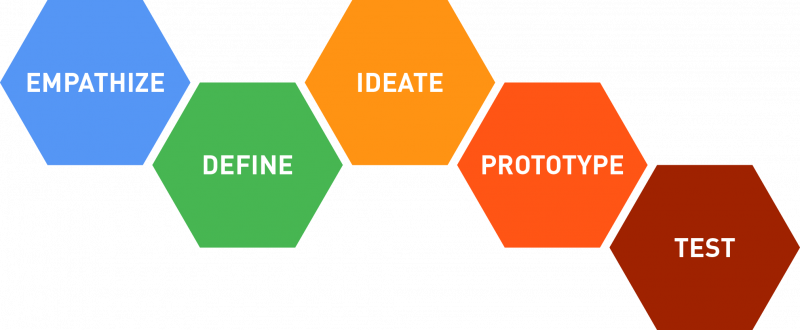Is there Room for Creativity in Participatory Design?
Posted on December 14, 2021
Illustrated by MH
Four months at Parsons and I’m drinking the kool-aid. The punch is sweet but there’s a hint of sour, and I don’t know if this is the drink for me.
Over the first four months as an MFA student, I’ve been inspired by coursework on equity, sustainability and care in design. But I’ve also been pushed to define my own design practice, a daunting task.
What is my design practice?
Let’s start with what I know.
I know that I want to meet people from different backgrounds, hear their stories, use my platform to amplify silenced voices and co-design meaningful interventions that help. In class, I’ve learned to approach design with a focus on participation and representation, and I want my work to embody these values.
What I haven’t figured out is the role of creativity in this work.

Illustration by MH
As an undergraduate, I was introduced to design through a student club that pairs local organizations with college students who serve as design thinking consultants. Over the course of three years, I collaborated with a middle school teacher, a hospital and a criminal justice reentry organization. I learned the design thinking approach commonly found in Silicon Valley: empathize with the user, define the problem, prototype a solution, test it with the user and iterate.
At the time, this design education provided what I wanted – a way to use empathy and creativity to make positive change, and yet something felt off. With some exceptions, our design teams rarely delivered implementable solutions to community partners, and community partnerships typically didn’t last longer than a semester, with students either switching projects or leaving the design club. Perhaps more importantly, design recommendations came from us, students at a private university, and not from the community partners. If I could do it over, I would make an effort to involve community partners in all steps of the design process.

Nonetheless, I felt excited by design thinking because it granted total creative freedom. Since working on these early design thinking projects, I’ve realized that divergent thinking invigorates me. I enjoy seeing problems from new angles, casting assumptions aside and brainstorming novel solutions. But as I am starting to see, creativity can also be a way for designers to stamp their imprint on problems foreign to their own experience. Put differently, solutions generated for someone else’s problems, now matter how out of the box, will be limited because every designer has blind spots. Participants’ lived experiences, rather than the designer’s own speculations and ideas should be the start and end of a design project.
In their paper, Boehnert and Onafuwa (2016) echo this school of thought, urging designers to foster equity and inclusion. The antithesis to this, they write, is using design to uphold symbolic violence, a term Bordieu (2001) introduced to refer to “a gentle violence, imperceptible and invincible even to its victims, exerted for the most part through the purely symbolic channels of communication and cognition (or more precisely, miscognition), recognition, or even feeling” (Bourdieu, 2001, 2). Boehnert and Onafuwa highlight ways that designers reproduce power dynamics enmeshed with racism, sexism, classism and ecoism, “…often without realising the extent of their own complicity with structural and symbolic violence” (Boehnert and Onafuwa, 2016, 2).
They explain that symbolic violence stems from a lack of participation: “What may at first glance seem neutral also reveals underlying assumptions and prejudices resulting from social distances between designers and the diverse audiences and users of design communication, artifacts and services” (Boehnert and Onafuwa, 2016, 6). By looping participants with different perspectives into the full design process, designers can cover their blind spots and avoid the pitfall of unintentional symbolic violence.
Let’s add one more item to the “what we know” list: I don’t want to enact symbolic violence.
And so now, with a semester of design school under my belt, I ask myself: Does this model of participatory design, which sees designers as facilitators instead of problem solvers, allow room for creativity?
On the one hand, if I am the one generating “solutions,” (my professors cringe at this word, as it connotes a silver bullet and diminishes the complexity of wicked problems) it detracts from the overarching goals of participation and representation and opens the door to symbolic violence. Who am I, as an outsider, to brainstorm solutions for someone else’s lived experiences? In order to maintain a truly participatory mode of design, I may need to quiet my inclination to problem solve and instead, allow interventions to emerge from the lived experiences of participants.
On the other hand, without some degree of creativity, participatory design can become formulaic and lack the flexibility necessary to adapt to a given project.
I think creativity has an important role in participatory design, though it might not look quite how it did in college. Creativity is a powerful asset when it comes to versioning design research tools, illuminating hidden patterns in qualitative data, pivoting during semi-structured interviews, and calling attention to the voices that are missing in a given project.
With this in mind, I feel compelled to strike a balance between service and self-nourishment in my design practice.
I want to design for equity, and to do it in a way that feels sustainable for me as a practitioner. With a year and a half left as an MFA candidate, I want to develop a practice that feeds my desire for creative thinking and nonetheless centers the values of representation, participation and equity throughout my work. I don’t want to be another designer of symbolic violence.
Maybe this kool-aid is safe to drink after all.
MH
References
Boehnert, J., Elzenbaumer, B., & Onafuwa, D. (2016). Design as Symbolic Violence. Design for Social Justice. DRS2016, Design+ Research+ Society: Future Focused Thinking.
Pierre Bourdieu, Masculine Domination. Translated by Nice, R., (London: Polity, 2001), 2.